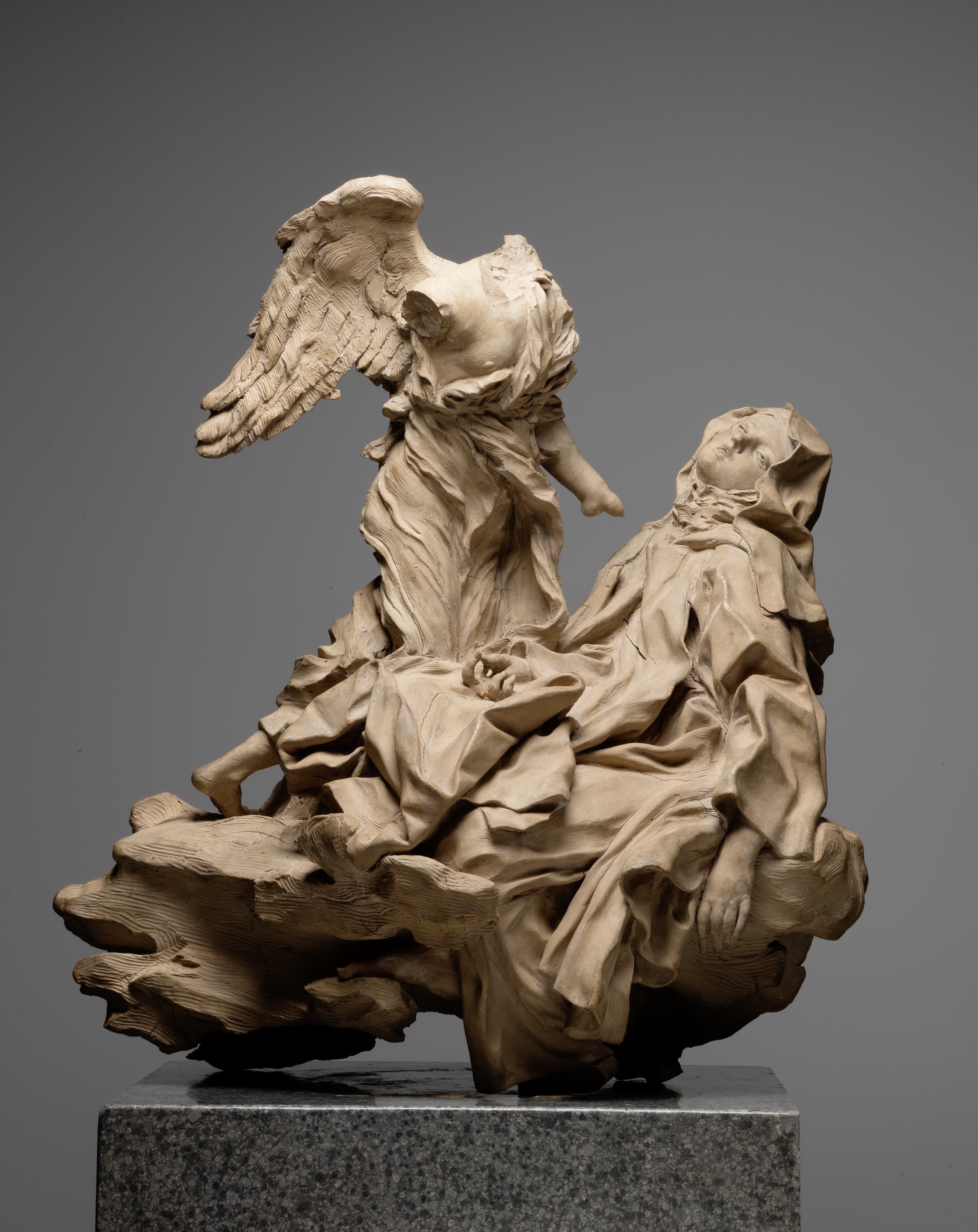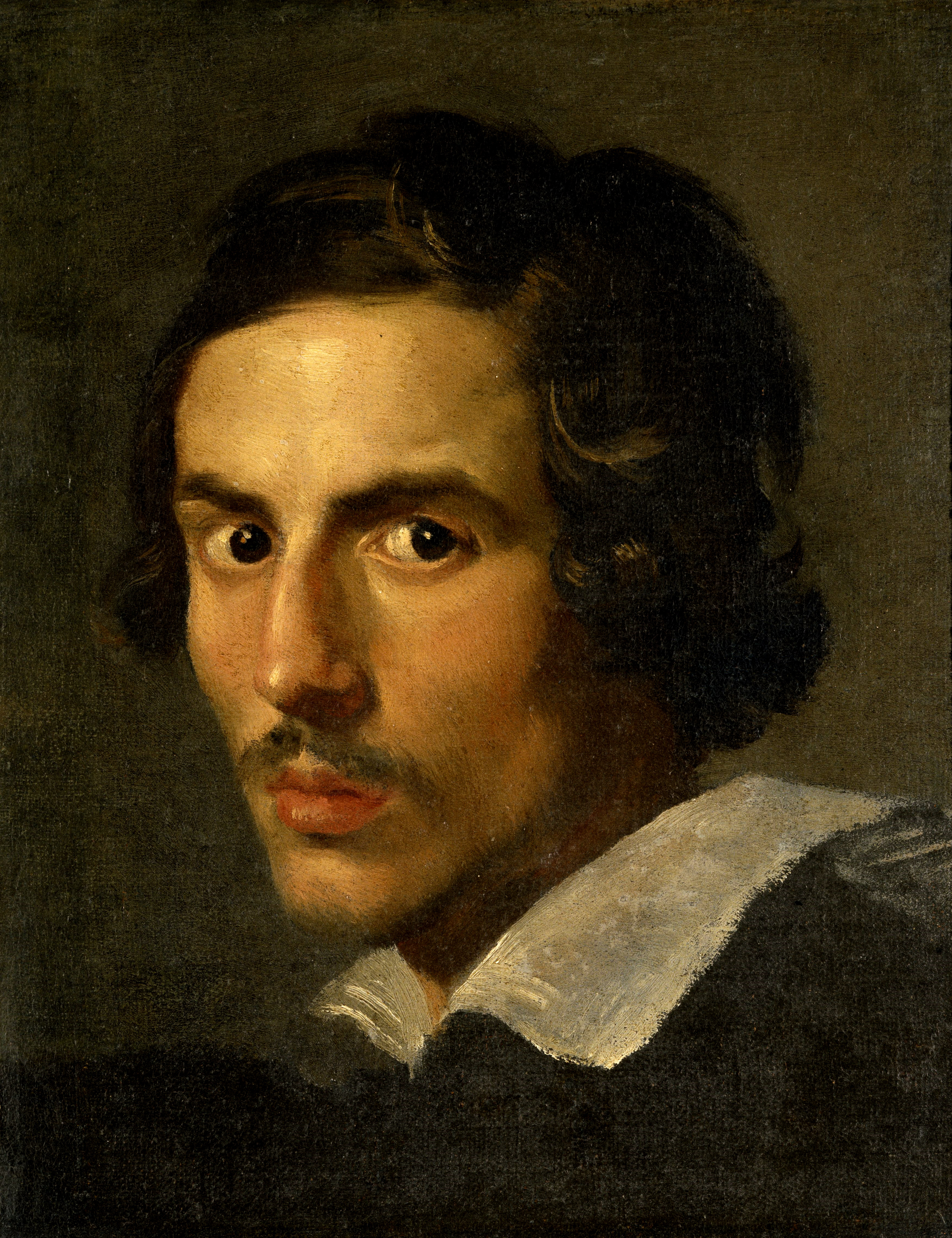This is our last Sunday with our special feature of the Caravaggio & Bernini exhibition, on view at the Kunsthistorisches Museum in Vienna until January 20th, 2020. The exhibition is truly amazing (we have seen it); we highly recommend a visit to Vienna before it closes! : )
In this model for one of Bernini’s most famous works, The Ecstasy of St Teresa of 1647–1652, the sculptor reveals himself to be a modeler at the top of his game. The terracotta conveys the essence of the intense drama that Gian Lorenzo Bernini staged in the Cornaro chapel in the church of Santa Maria della Vittoria in Rome: the ecstasy of the Spanish saint on her way to her mystical union with God as she described it in her autobiography. She relates how a small, beautiful angel pierced her heart and intestines with a flaming gold arrow of love and kindled her for God. Groaning with pain that was severe and sweet at the same time, Teresa prayed that it would never stop. Bernini shows her floating on a cloud, wholly overwhelmed by her mystical experience, with drooping limbs, her head hanging back, lips parted, and eyes half open. The angel is about to pierce her again.
Bernini’s depiction of garments moving wildly and unnaturally provoked repeated commentary, particularly in response to his later works, but biographer Filippo Baldinucci cites Bernini parrying the criticism: "... and even though some criticized the drapery of his statues as too folded and too pierced, he praised the extraordinary merit of his chisel that had been able to overcome the difficulty of depicting in marble something as pliable, so to speak, as these garments, bringing together sculpture and painting." This painterly quality and the character of the spontaneous, sincere franchezza (touch) that Bernini achieved in marble emerges even more strongly in the tactile, animated modelling of this terracotta. Small differences from the final work—such as the position of Teresa’s head—and above all the superior quality of the model demonstrate that this is not the work of an assistant or copyist, as has been suggested, but a presentation model by the master himself.
This model is in the collection of The State Hermitage Museum, St Petersburg.
P.S. Bernini was an absolute master of drama and livening up his works. See here these five fleshy sculptures that could come to life!


 Gianlorenzo Bernini
Gianlorenzo Bernini